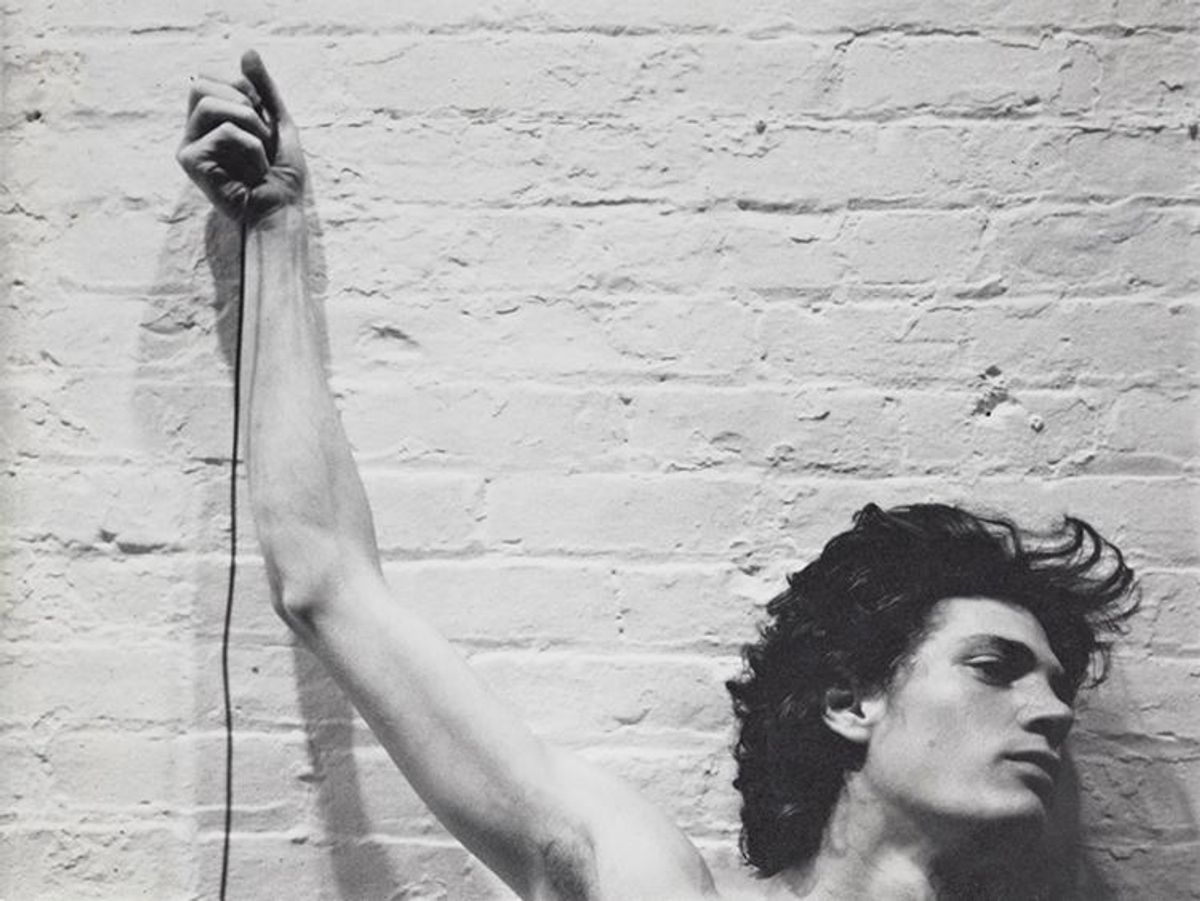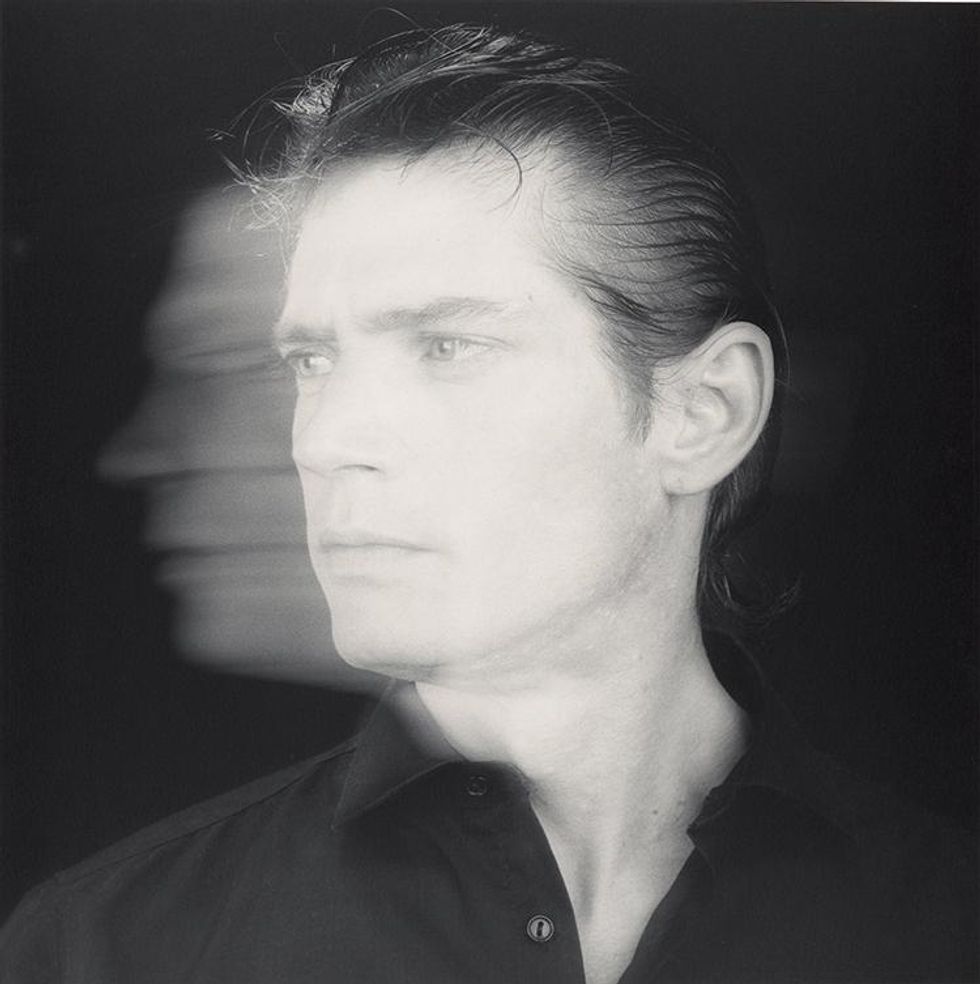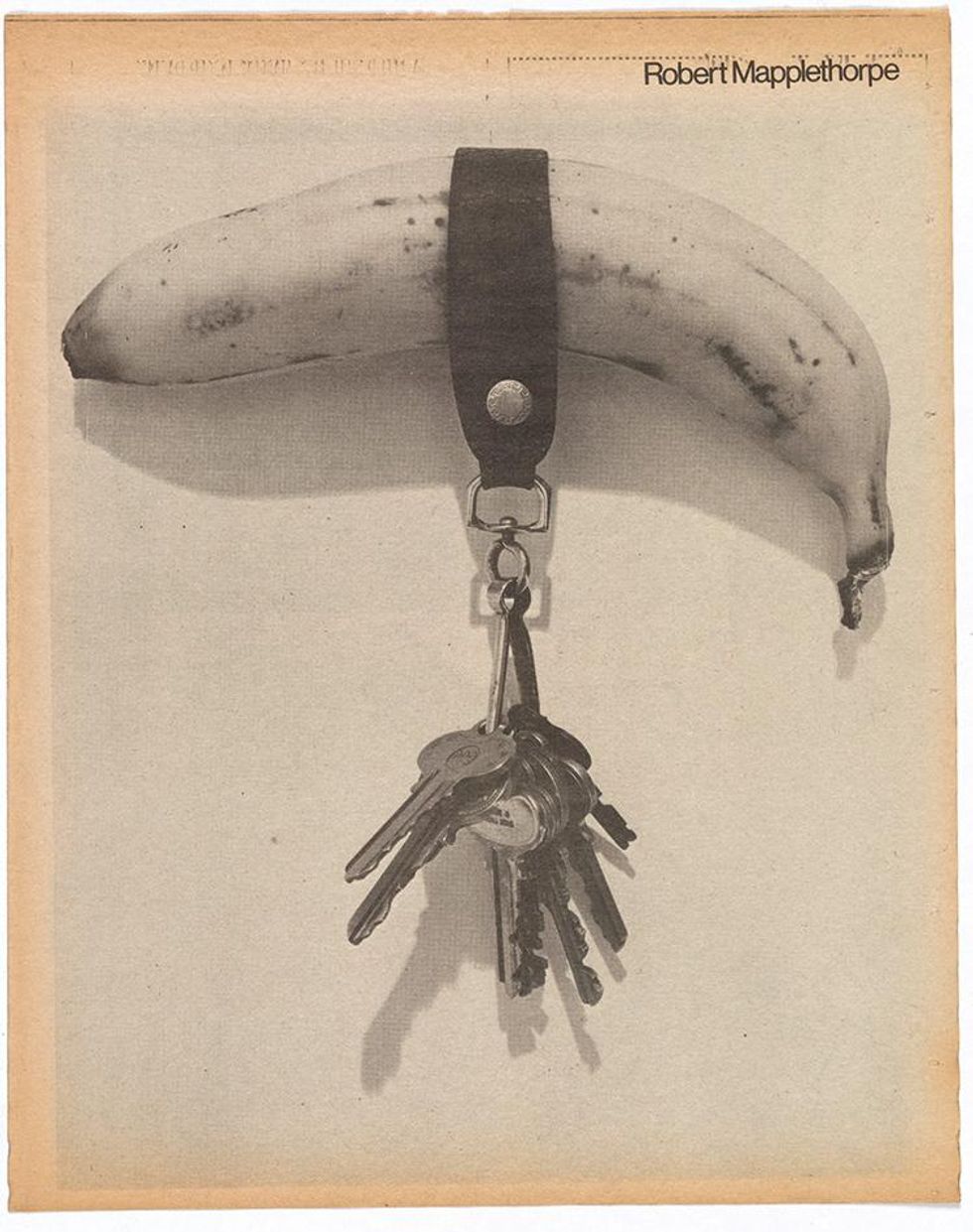Art & Books
Why We Can't Forget Robert Mapplethorpe

27 years after his death, the "shy pornographer" gets a major Los Angeles retrospective.
March 09 2016 10:45 AM EST
April 12 2016 10:17 PM EST
By continuing to use our site, you agree to our Private Policy and Terms of Use.

27 years after his death, the "shy pornographer" gets a major Los Angeles retrospective.
Courtesy of Robert Mapplethorpe: The Photographs (J. Paul Getty Museum, March 2016).
In one of his most famous self-portraits, photographer Robert Mapplethorpe stares at the camera while gripping a cane with a skull-shaped handle. His expression is defiant but restrained. Still handsome, he's in his early 40s, grimly thin for his age, and only a year away from his death in early 1989 from complications due to AIDS. By the time the photo was made, Mapplethorpe was defiant ("a symbol of courage and resistance to the disease," The New York Times wrote in its obituary), and would remain so, even in death. Within months of his passing, the Corcoran Gallery of Art in Washington, D.C., pulled his exhibition, "The Perfect Moment," under pressure from a right-wing Congress, ensuring that Mapplethorpe's legend -- propelled by a downtown myth of the improbable kid who made it in Manhattan and whose friends, most notably Patti Smith, had made it, too -- would enter the larger public sphere as a rejoinder to the "family values" coalition of Reaganite America. The images from that show, the so-called "X Portfolio" of BDSM photographs, instantly entered the collective historical pool of controversial art as hallmark gay erotica, hogging much of the attention the rest of his work might have received. We know this Mapplethorpe quite well, but "The Perfect Medium," a new retrospective at the Los Angeles County Museum of Art and the J. Paul Getty Museum, comprehensively reappraises the artist via his archive, from his early drawings when he was a student at Pratt to his final photographs, and provides a much broader picture of Mapplethorpe.
Mapplethorpe met Smith in Brooklyn in 1967, and they eventually moved into the Chelsea Hotel, where they lived together for a brief but formative period. Mapplethorpe's work was first shown outside school at Stanley Amos's gallery in the hotel in 1970, when he was 24. His earliest pieces were mostly sculptural, junk shop assemblages that pulled together urban detritus, scraps of clothing, and metal. In their unpolished form, Mapplethorpe's sculptures made his studio look "as if some Hell's Angels had sailed through Miss Havisham's room and landed on her bridal suite," in the words of the poet Jim Carroll. "The only thing missing was the case and cobwebs." In one now-lost work, an empty picture frame with a woman's bag jutting out of it hung from the ceiling by a chain with a leather jacket draped around it -- a summary of the territory that Mapplethorpe would later vigorously map in his photography. (This sculpture and others like it are presented in "The Perfect Medium" through documentary photographs of the work; much of this early period is otherwise gone.) The Chelsea Hotel exhibition would change Mapplethorpe's life. The gallerist Charles Cowles, then the publisher of Artforum, visited the gallery and purchased a large altar from the show. Soon after, Sam Wagstaff, a prominent collector of photography, became Mapplethorpe's patron and partner.
Mapplethorpe's soft sculptural methods prefigured many of his erotic works, particularly his photography, which often presented the body as a sexualized object to be molded, angled, set on a pedestal. Like a cock, for example. This practice emerged from Mapplethorpe's nightclubbing at the then-novel leather clubs of the Meatpacking District. A card-carrying member of the homintern that frequented the Mine Shaft (Michel Foucault, Rock Hudson, and Freddie Mercury were also attendees), Mapplethorpe became increasingly interested in the BDSM gear of the men who sweated it out in the basement and began to incorporate leather into his photography, particularly his self-portraits, the earliest versions of which are on display at "The Perfect Medium." Encouraged by Wagstaff to focus on the male nude, Mapplethorpe photographed the technology that formatted the kind of play he preferred -- both sexual and emotional. In Untitled, from 1973, a two-sided triptych features three images of a man, perhaps the artist himself: the first one with boots; the second with the man's erection pushing through his jeans, a la the Rolling Stones' Sticky Fingers album cover; and the third with the cock and balls restrained and pulled tight in a lower-body harness. Beside them are three photos of a milk carton, with the middle one crumpled on an apartment counter -- circling back to the artist's general interest in physical disposability.

Crucially, "The Perfect Medium," and its catalog, which leads off with a new essay by Patti Smith, widens Mapplethorpe's scope beyond the popular, coolly sexual work from the 1980s for which he is best known. In particular, the exhibition helps to deconstruct the myth behind Mapplethorpe, a myth he worked tirelessly to generate -- beginning with his undergraduate life at Pratt, where his "transgressive" (the word used in the show's catalog) antics helped make him a legend. This period, when his work consisted mostly of surrealist drawings of beasts and figures folded into geometric forms, is largely absent from the popular imagination of the "shy pornographer" (Wagstaff's words). Likewise, a number of early collages and drawings, including one featuring a penis sliced in two. As exhibition curators Paul Martineau and Britt Salvesen note, this image "presages his later photographs on sexuality and the sexuality he 'extracted' from his work with flowers" -- a series from the 1980s that, in intense black-and-white, obtains a vivid, classical sensuality.
Using Wagstaff's archive, Martineau and Salvesen also reconsider his influence on Mapplethorpe, especially through the lens of their private lives. The exhibition and its catalog include notes, invitations to parties they hosted, and even the handwritten eulogy Mapplethorpe composed when Wagstaff died of AIDS in the winter of 1987. After meeting Wagstaff, Mapplethorpe turned away from his earlier sculptural work and focused on photography (of which Wagstaff was said to be "the spiritual champion"), drawing inspiration from Wagstaff's archive and security from his financial support while aiming to advance the medium further within the realm of fine art. The exhibition also highlights Mapplethorpe's points of resistance to his patron, especially in his turn to commercial photography in a bid for greater independence. Wagstaff's influence was exhausting for those who worked with the artist. Speaking of a 1977 exhibit, dealer Holly Solomon once complained, "Sam was a sweet and elegant man, but he was like a Jewish mother. He called every 10 minutes when we were hanging the show."
Martineau and Salvesen also include material revealing how Wagstaff's influence on Mapplethorpe extended into "broad cultural issues." They cite an October 1979 New York Times book review by Linda Nochlin of Germaine Greer's The Obstacle Race: Fortunes of Women Painters and Their Work, which Wagstaff saved for Mapplethorpe. Wagstaff starred Nochlin's criticism that Greer failed to address the absence of seductive nude men in art.

Twenty-seven years after Mapplethorpe's death, the issues his art raises, particularly the look of alternative sexualities (and the lives of those whose communities those sexualities forge), seem not only vital, but an essential retort to an American culture that still pays quiet allegiance to the conservative values that defined the 1980s.
While bringing to light the lesser-known aspects of his career is a necessary part of "The Perfect Medium," perhaps its greatest strength lies in reaffirming the Mapplethorpe we already know: the prematurely gray eminence of erotic photography who approached the male and female figure without compromise, even if his eye led him into sometimes problematic territory, particularly with regard to race.
The complexity of his vision, especially of human sexuality (and by extension, human beauty) of every manner and persuasion, remains critical in the bowdlerizing age of Instagram, when more of us are able to distribute pictures online than ever before, and yet face extraordinary censorship of the nude image, even if it's as mundane as a (female) nipple.
For Mapplethorpe, the naked body, an imperfect medium, was more than an erotic site; it was an instrument for an inquiry into human desire and expression. He repeatedly photographed it to better understand its nature, and transposed it into a vision that brings us closer to knowing ourselves.
Like what you see here? Subscribe and be the first to receive the latest issue of OUT. Subscribe to print here and receive a complimentary digital subscription.